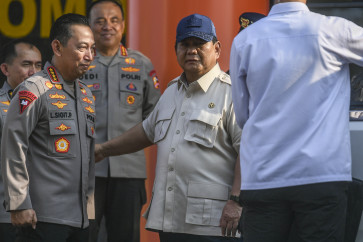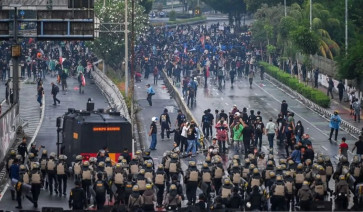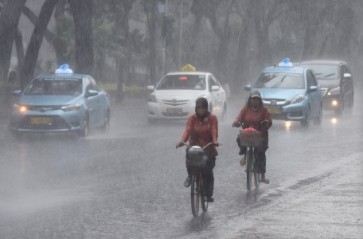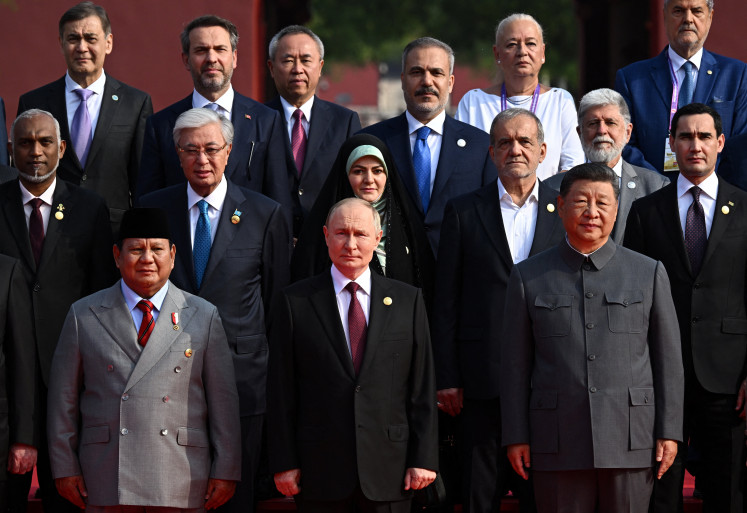Popular Reads
Top Results
Can't find what you're looking for?
View all search resultsPopular Reads
Top Results
Can't find what you're looking for?
View all search resultsLee Kuan Yew and the Asian model
Hundreds of obituaries and articles have been written about Lee Kuan Yew, who was laid to rest last weekend
Change text size
Gift Premium Articles
to Anyone
Hundreds of obituaries and articles have been written about Lee Kuan Yew, who was laid to rest last weekend.
The articles were overwhelmingly in tribute of the vision, leadership qualities and achievements of Singapore's founding father, who left his imprint on so many aspects of the island state's system and way of life.
The tributes were mixed with criticisms of the political authoritarianism that was mixed with the spectacular economic growth.
There will be many PhDs written, which would make judgments on his side of the story and that of the critics.
As for Lee's own assessment, he summed it up thus: 'What did I achieve? A successful Singapore. What did I give up? My life.'
On the TV news of LKY's passing, I was impressed by an interview with a young man who runs an internet views service.
He said this was the time to pay tribute to Lee and his achievements, after which would come a period of collective reflection on what happened in the past five decades and how Singapore should go forward.
The times have changed. Singapore too is changing and will doubtless change even more.
One of LKY's major achievements was to be a pioneer of combining the roles of the state and the market in a way that succeeded in generating and sustaining high economic growth, and with widespread social benefits.
He did it in a way that was suitable, or that was adapted, to the situation of a nation with a small population, no natural resources and no significant market.
He opted for the model of being a 'global city', that used the world as a source of capital, technology and markets, with foreign companies providing the engine, the world's population providing the market, and Singapore providing its geographical location and skills.
Singapore also diversified from trade to oil refinery and industry and to being also a global financial centre.
It is the combining of state and market that made it part of the East Asian models of development.
This strategy is based on having the state play the leading role not only in setting the overall framework for development but also sometimes playing a direct role in it.
By also involving the private sector in an important role, this model is different from the old state socialism, and by being based on the manifold roles of the state; it is also different from laissez faire free market capitalism.
While most manufacturing companies are private and foreign-owned, the state in Singapore has played important roles in selected industries, in banking, in transportation and a range of other services.
Public housing was based on a combination of the state being the developer, construction being undertaken by private contractors, and the ordinary people being the owners by paying the mortgage through their salaries, the whole enterprise organised by the Housing Development Board and the Central Provident Fund.
The state's overwhelming role in the social sector was based partly on subsidies but also significantly on self-financing by individuals, through the CPF scheme that includes withdrawals for housing and medical needs.
The Economist magazine in 2012 credited Singapore for starting what it called 'the new kind of state capitalism' which it said had become the fashion in emerging markets and had come to be a major challenge to Western liberal capitalism.
In fact, there are important variations of this so-called 'state capitalism'.
Singapore relied on foreign companies to lead its industrial revolution (while the state focused on providing services).
Japan and South Korea built their own domestic industries, with eventually world-beating private companies that were egged on by a lot of state assistance and nurturing.
In Malaysia, we have our own model, with the state taking over ownership of the once foreign-owned plantations and tin mines, through state-owned commercially run companies.
It has its own national oil company and a production and benefit-sharing arrangement with the global oil multinationals and foreign companies predominant in several industrial sectors; while the state also has its own enterprises in banking, real estate development, telecommunications, utilities, agriculture and manufacturing, usually in competition with local and foreign private firms.
The Malaysian model is a hybrid of state and private enterprises, often having both co-existing and competing in commercial activities.
China is said to have been inspired by the Singapore model. After Deng Xiao Ping's visit to Singapore in 1978, he began the change in the old China model, which through many metamorphoses is now an evolving system of its own ' a confusing and complex mixture of state and private enterprises, but always with the leading role of the state.
It has become its own unique hybrid model, combining the Singapore model of attracting foreign investors with the Japan-Korea model of establishing domestic enterprises and industries which dominate the local market and then increasingly penetrate the world market in trade and investment.
The Western countries which now espouse 'free market economics' grew on the basis of 'state capitalism' in their formative years. Indeed, often a much cruder form of it.
Example: the East India Company owning economic sectors in many Asian colonies, supported by military colonial rule and massive economic subsidies.
Having helped their companies to grow into giants, it appears they now want to forbid others from taking policy measures to do so.
Even now, the Western countries give massive financial and other forms of support to their agriculture sector. Free market economics is rejected by their states in sectors where they are unable to freely compete.
The East Asian models are now being challenged by Western attempts to de-legitimise the economic role of the state, the latest being free trade agreements such as the Trans Pacific Partnership Agreement, in which the state's policy space to set the rules in investment policies, government procurement and key services such as finance and telecommunications is being narrowed.
The TPPA also has a section not present in previous FTAs, which seeks to discipline how governments treat their state-owned enterprises (SOEs).
It forbids the state from giving any advantages to these enterprises, and the SOEs are not allowed to give an advantage to locals when they buy or sell services and products.
The concept that the 'free economy' is best and the state has no role except to enable it has been promoted in developed countries for export to developing countries as the recipe for development.
But they did not practise it when they were developing and still do not practise it in areas where they cannot compete. (***)










